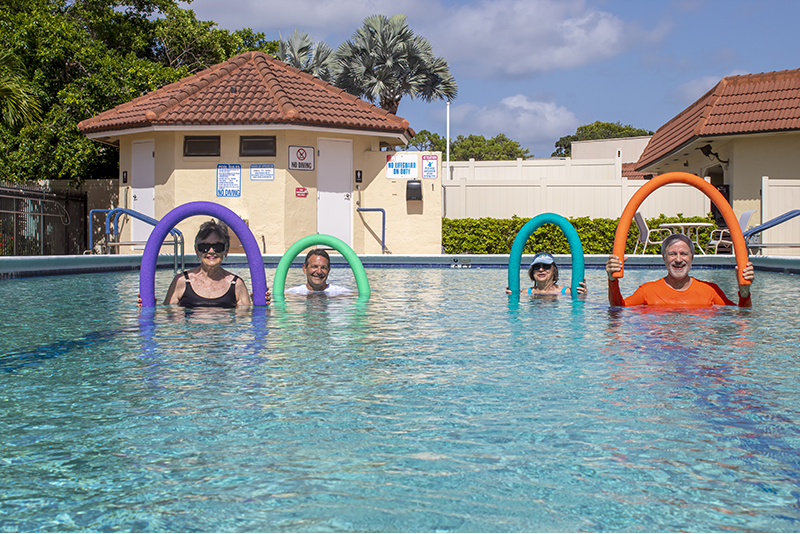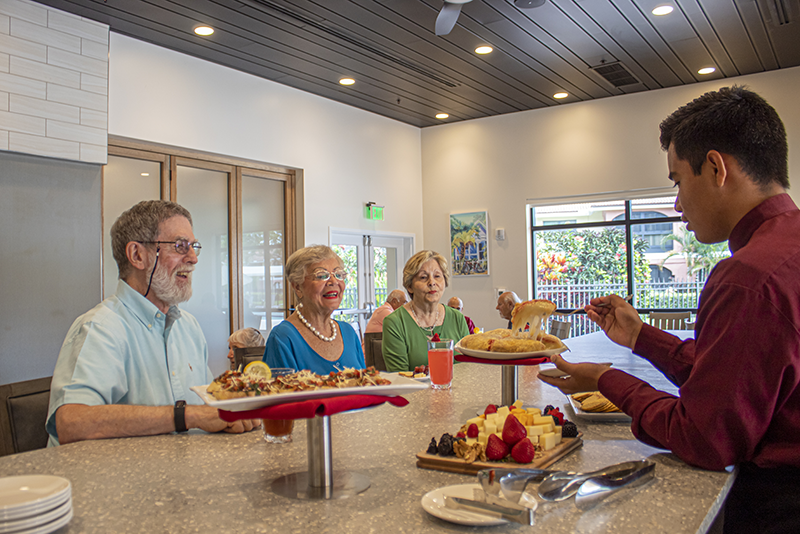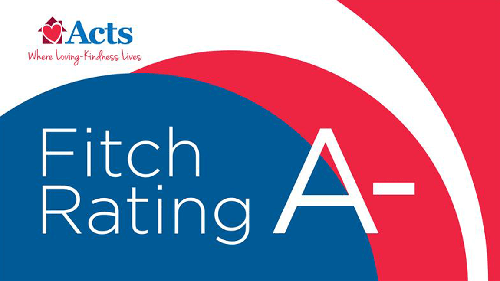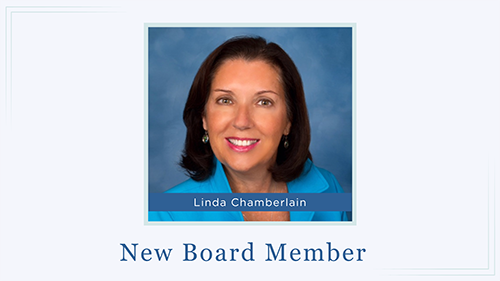The Best Age to Move to a Continuing Care Retirement Community
A continuing care retirement community (CCRC) is an innovative approach to retirement living that has been growing in popularity over the last several years.
CCRCs differ from the typical sense of a retirement community by providing for the healthcare needs of their residents no matter what those needs are, and no matter how those needs may change over time. This has made CCRCs attractive choices for those who want to be fully prepared for whatever may come in the future.
The impact of such an arrangement is groundbreaking.
What is the Best Age to Move to a CCRC?
While the best age ultimately depends on a number of individual factors, the majority of people move into a CCRC between the ages of 75 and 84.
This age is considered ideal, as it means that healthy, active retirees can fully take advantage of the luxurious amenities offered — the swimming pools and fitness centers and fine dining, the card tournaments and woodworking shops and excursions, and the like.
Then, if their healthcare needs ever change, they don’t have to relocate to a separate assisted living or skilled nursing facility. They can remain on the same campus and take advantage of the benefits of a CCRC’s exceptional healthcare capabilities. Depending on the type of contract selected at move-in, this may not even result in increased living fees.
Related content: Learn about the various contract types available at a CCRC.

Typical Age Range for Moving into a CCRC
Because of a CCRC’s ability to provide world-class health services to its residents, the age range for those residents can be quite varied. Many CCRCs have residents as young as their early 60s who simply want to enjoy all that a luxury retirement community has to offer, and as old as those well over one hundred.
That said, most older adults tend to wait a few years after they retire before moving to a CCRC. It’s more common to see retirees move to a CCRC after reaching their early to mid-70s, as this is often when many of us tire of maintaining our own property and look for the convenience of retirement community living, where lawncare and home maintenance are handled for us and every night offers a new event on the schedule.
It’s also when we start admitting that our health may not always be perfect and the insurance policy of guaranteed care may be a good thing.
The Best Age to Move into a CCRC
It’s true that a large proportion of seniors will live in their existing homes directly after they retire, especially if they already own the property.
However, there’s no reason to wait until your early to mid-70s before relocating to a CCRC. In fact, that approach deprives you of retirement community benefits sooner.
It’s best to get to enjoy for longer the access to fitness centers and swimming pools and gardening areas and common rooms and hobbies. Too many move in later and realize they could’ve been enjoying their dream retirement for years (if not decades!).
Think about it: all your friends as neighbors. Social events for every meal. Playing cards or tending the garden instead of mowing the lawn or shoveling the driveway. Spoiling your grandchildren instead of paying property taxes or replacing a water heater. The security of knowing you’re in a gated, protected community. CCRCs that are networks of communities, like Acts Retirement-Life Communities, even give you the option to travel to other campuses around the country.
This is why so many retired or soon-to-be retired people are moving to a CCRC in their mid-60s. They get to enjoy the benefits longer!

A Sampling of CCRC Benefits
World-class CCRCs like those operated by Acts include nearly unlimited activities and amenities.
Here are just some of what you can look forward to:
- Stay physically active with indoor or outdoor pools, access golf courses or putting greens, and fully-equipped fitness centers where you can take classes with physical trainers.
- Enjoy your choice of fine or casual dining right on the luxurious, resort-like campus, with food prepared by professional chefs.
- Never worry about home maintenance and lawn care, as CCRC staff take care of all those details to keep your surroundings beautifully landscaped and trimmed and your home in perfect working order.
- Get everyday tasks done at facilities like on-campus banking and beauty salons so that you don’t have to waste time that you could be spending enjoying life.
- Embrace and explore your spirituality at on-campus non-denominational chapels and benefit from the guidance of a full-time chaplain.
- Schedule day and overnight trips to local shopping centers, museums, concerts, and other cultural events as well as doctor appointments and other needs.
And this is still just the tip of the iceberg!

A CCRC is Great at Any Age
There really is no “bad” time to move to a CCRC. While there are dozens of fantastic amenities to enjoy for younger retirees, there’s also plenty to do, see, and enjoy for seniors of any age, especially when it comes to the social benefits of being around fellow retires.
This means there is no wrong answer when it comes to choosing when to move to a CCRC. From its youngest residents to its oldest, there’s truly something for everyone.

Healthcare Benefits
Even more noteworthy are the healthcare benefits of a CCRC. Moving to one of these communities at any time during your retirement offers an incredible amount of peace of mind as you never have to worry about not having access to a higher level of care if you find you might need it one day. Instead, you can rest easy that you’ll be covered should that day ever come. Until then, you can simply enjoy your retirement to its fullest, knowing exactly what you’ll need to budget for to make your retirement last, with no surprises.
Most Cost-Effective Option
Believe it or not, despite offering all the tremendous benefits mentioned here, moving to a CCRC is often the most cost-effective housing option as well.
The costs of healthcare are constantly on the rise. As such, we always wonder what we’ll need and when, and whether it will be covered by Medicare or any of our insurance supplements.
Moving to a CCRC removes that fear. Depending on the contract, you can “lock in” the amount you pay for your healthcare at the time of move-in, meaning besides possible cost of inflation increases to your living expenses, your monthly budget for healthcare won’t change for however long you live at the CCRC.
Couple that with no longer having to pay for maintenance and upkeep on your own residential property as well as ever increasing property taxes, plus other expenses like gym memberships and dinner, and that’s savings and security you can take to the bank.
Many residents sell their homes, use some of the profits to move into a CCRC, and then keep the rest in their nest egg.
Find a CCRC Near You
Ultimately, the best age to move into a CCRC depends on you and your family’s situation. Either way, CCRCs have become popular retirement destinations for a reason, thanks to their resort-like amenities and their ability to provide older adults with robust, affordable healthcare.
Does a continuing care retirement community sound like a great place to live? Find an Acts CCRC near you to learn more!





